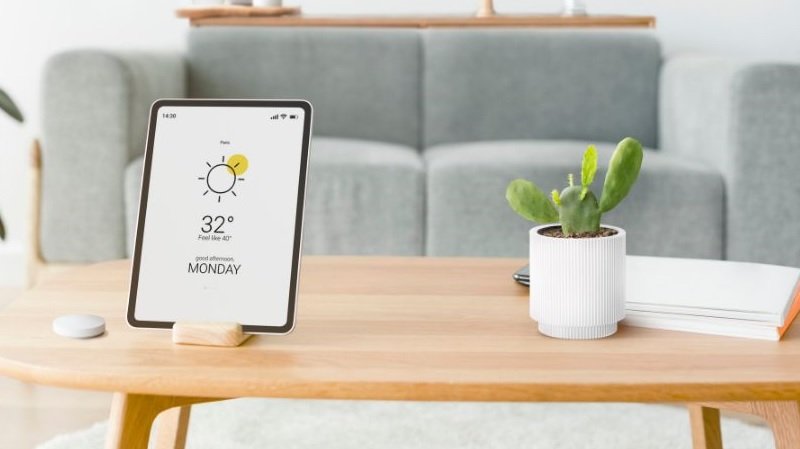Tips for organizing Smart Home Automation Devices
Smart home automation devices can make your life easier and more efficient, but they can also be a bit overwhelming to manage. Here are some tips for organizing your smart home automation devices so that you can get the most out of them:

What is the recommended way to name your smart home automation devices?
To organize your smart home automation devices, use a consistent naming convention. This means using the same prefix or suffix for all devices of the same type. For example, you could use the prefix light for all of your lights, sensor for all of your sensors, and so on. This will make it easier to identify and find your devices, especially if you have a lot of them.
Tips for creating a naming convention for Smart home automation devices:
- Use descriptive names that accurately reflect the purpose of the device or automation.
- Use a consistent naming style throughout your Home Assistant setup.
- Avoid using abbreviations or acronyms that you may not remember later.
- Make sure the names are unique so that you don’t accidentally create duplicate entities.
Examples of good naming conventions:
- Devices: living_room_light, bedroom_door_sensor, front_door_lock
- Sensors: temperature_sensor, humidity_sensor, motion_sensor
- Automations: turn_on_living_room_light_when_motion_detected, lock_front_door_at_10pm
- Scripts: turn_off_all_lights, open_garage_door
By using a consistent naming convention, you can make your smart home automation system more organized and easy to use.
Group your devices by room
This tip suggests that you organize your smart home automation devices by the room where they are located. This will make it easier for you to control your devices in a specific area of your home. For example, you could create a group for all of the lights in your living room, a group for all of the sensors in your bedroom, and so on.
Here are some of the benefits of grouping your devices by room:
- It makes it easier to find and control your devices. For example, if you want to turn on all of the lights in your living room, you can simply say “Alexa, turn on the living room lights.”
- It allows you to create automations that are specific to a room. For example, you could create an automation that turns on the lights in your bedroom when you enter the room and turns them off when you leave.
- It helps to keep your smart home organized and easy to manage.
If you have a lot of smart home devices, grouping them by room can be a helpful way to keep them organized and easy to control.
Use automations to control your devices
Automations can help you to automate tasks and make your life even easier. For example, you could create an automation that turns on your lights when you come home or turns off your thermostat when you leave.
- Automations are rules that tell your smart home devices what to do under certain circumstances.
- For example, you could create an automation that turns on your lights when you come home or turns off your thermostat when you leave.
- Automations can help you to automate tasks and make your life even easier.
Here is an example of an automation that you could create:
- Trigger: When the front door opens.
- Action: Turn on the living room lights.
This automation would tell your smart home devices to turn on the living room lights whenever the front door opens. This could be helpful if you want to make sure that your home is always well-lit when you come home.
You can create automations for any event that you want to trigger your smart home devices. Some common triggers include:
- Motion detected
- Time of day
- Temperature change
- Door or window opened
- Device status
You can also create automations that combine multiple triggers. For example, you could create an automation that turns on the sprinklers when the temperature is above 80 degrees and it hasn’t rained in the past 20 days.
Automations can be a great way to make your life easier and more efficient. By automating tasks, you can free up your time to do other things. And by creating automations that are specific to your needs, you can make your home more comfortable and secure.
Use a dashboard to control your devices
A dashboard is a web page or app that provides a central location where you can control all of your smart home devices. This can be helpful if you have a lot of devices or if you want to control your devices from a single location.
There are many different dashboards available, so you can choose one that fits your needs and preferences. Some popular dashboards include:
- Home Assistant: A popular open-source home automation platform that offers a variety of features, including a dashboard.
- SmartThings: A cloud-based home automation platform that offers a user-friendly dashboard.
- Hubitat: A DIY home automation platform that offers a customizable dashboard.
Once you have chosen a dashboard, you can add your devices to it. This is usually done by scanning a QR code or entering a code from your device. Once your devices are added, you can control them from the dashboard.
Here are some of the benefits of using a dashboard to control your smart home devices:
- It can be a central location to control all of your devices.
- It can be easy to use, even if you have a lot of devices.
- It can be customized to fit your needs and preferences.
- It can be accessed from anywhere, as long as you have an internet connection.
If you are looking for a way to easily control your smart home devices, then using a dashboard is a great option. There are many different dashboards available, so you can choose one that fits your needs and preferences.
Use a voice assistant to control your devices
Voice assistants like Amazon Alexa and Google Assistant can be used to control smart home devices with your voice. This can be helpful if you don’t want to have to fumble with your phone or tablet to control your devices. For example, you can say “Alexa, turn on the lights” to turn on the lights in your living room, or “Hey Google, set the thermostat to 72 degrees” to set the temperature of your thermostat.
Here are some of the benefits of using a voice assistant to control your smart home devices:
- It’s hands-free. You don’t have to fumble with your phone or tablet to control your devices.
- It’s convenient. You can control your devices from anywhere in your home.
- It’s versatile. You can use voice commands to control a variety of smart home devices.
- It’s customizable. You can create custom voice commands for your specific needs.
If you’re looking for a way to make your smart home more convenient and hands-free, then using a voice assistant is a great option.
| Tip | Description |
|---|---|
| Use a consistent naming convention | Use the same prefix or suffix for all devices of the same type. This will make it easier to identify and find your devices. |
| Group your devices by room | Organize your devices by the room where they are located. This will make it easier for you to control your devices in a specific area of your home. |
| Use automations to control your devices | Create rules that tell your smart home devices what to do under certain circumstances. This can help you to automate tasks and make your life even easier. |
| Use a dashboard to control your devices | Use a web page or app to control all of your smart home devices from a central location. This can be helpful if you have a lot of devices or if you want to control your devices from a single location. |
| Use a voice assistant to control your devices | Use a voice assistant like Amazon Alexa or Google Assistant to control your smart home devices with your voice. This can be helpful if you don’t want to have to fumble with your phone or tablet to control your devices. |
By following these tips, you can make your smart home automation system more organized and easy to use. This will help you to get the most out of your devices and enjoy the benefits of a smart home.
Here are some additional tips to help you organize your smart home automation devices:
- Use a labeling system to identify your devices. This could be as simple as using sticky notes or as complex as using a barcode system.
- Create a master list of all of your devices and their locations. This will make it easy to find the information you need when you need it.
- Use a central hub to control your devices. This could be a smart home platform, a voice assistant, or a dashboard.
- Keep your devices up to date with the latest firmware. This will help to ensure that your devices are working properly and that you are getting the most out of them.
By following these tips, you can create a smart home automation system that is organized, efficient, and easy to use.
“Your feedback helps us understand what you are looking for in a blog post and how we can improve our content. We appreciate your time and effort in taking the time to leave a comment or share our blog post.”
FAQ:
FAQ 1: What is the recommended way to name your smart home automation devices?
Answer: Use a consistent naming convention, such as using the same prefix or suffix for all devices of the same type.
FAQ 2: How can I group my smart home automation devices by room?
Answer: Create a group for all of the devices in each room of your home.
FAQ 3: What are some benefits of using automations to control my smart home devices?
Answer: Automations can help you to automate tasks and make your life even easier.
“Check out our other blog posts below.”
The benefits of smart home for energy efficiency!

